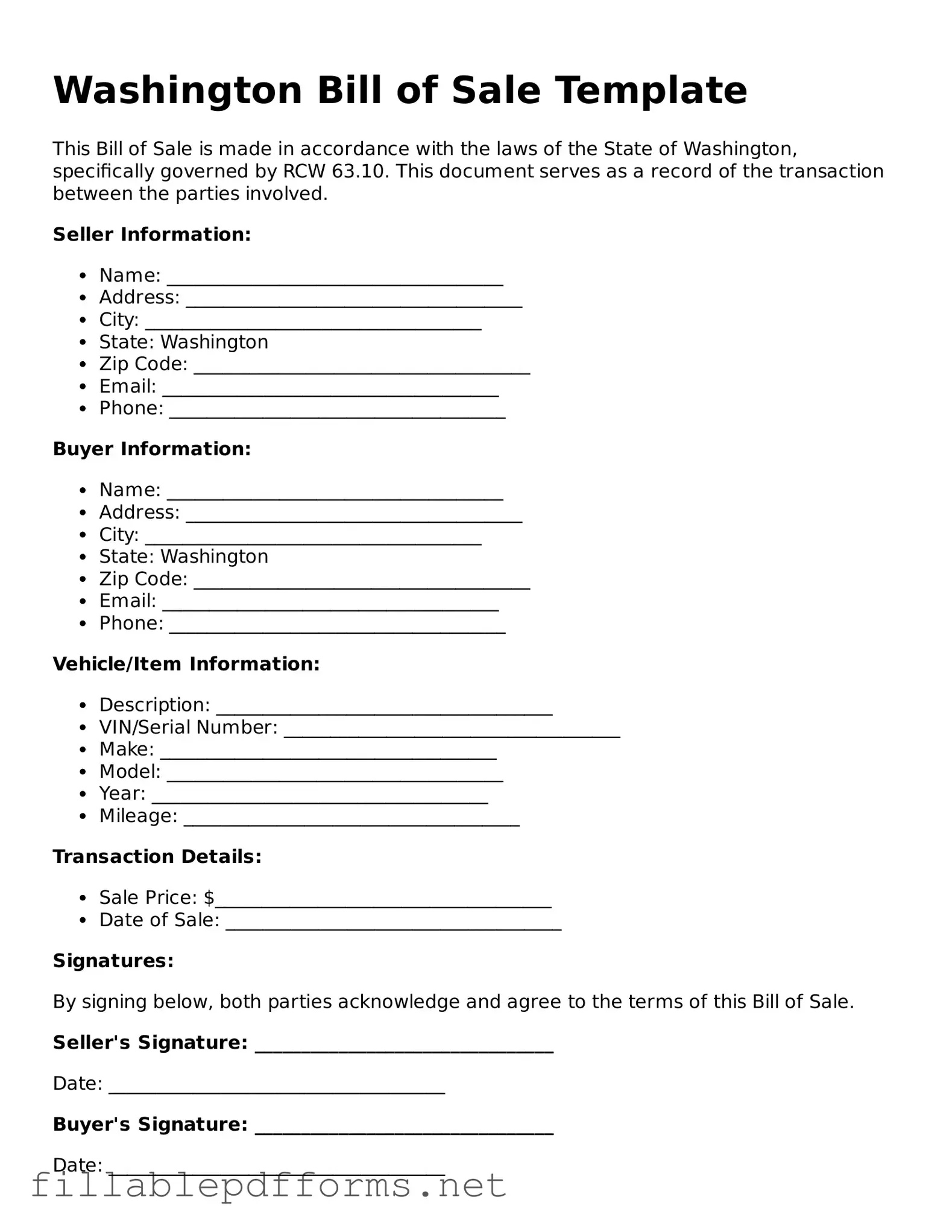Attorney-Verified Bill of Sale Form for Washington State
A Bill of Sale is a legal document that serves as proof of the transfer of ownership of personal property from one party to another. In Washington State, this form is particularly important for transactions involving vehicles, boats, and other significant assets. Understanding its components and requirements can help ensure a smooth and lawful transfer process.
Launch Editor Here
